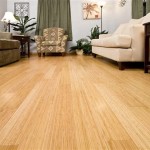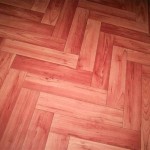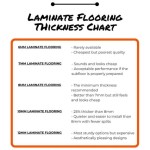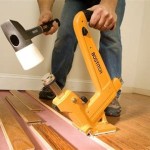Installing Linoleum Flooring: A Comprehensive Guide
Linoleum flooring, a resilient and environmentally friendly option, has gained considerable popularity as a cost-effective and durable flooring solution for various residential and commercial spaces. Its composition, primarily consisting of natural materials such as linseed oil, wood flour, cork dust, resins, and pigments, makes it a sustainable choice compared to synthetic alternatives. The installation process, while not overly complex, requires careful planning, preparation, and execution to ensure a long-lasting and aesthetically pleasing result. This article provides a comprehensive guide to installing linoleum flooring, outlining the necessary steps and considerations for a successful project.
Before embarking on the installation, it is crucial to gather all the necessary tools and materials. Key tools include a measuring tape, straightedge, utility knife with sharp blades, notched trowel, roller (approximately 100 lbs), seam roller, chalk line, pencil, safety glasses, and knee pads. Material requirements encompass the selected linoleum flooring (sheet or tiles), appropriate adhesive recommended by the manufacturer, patching compound (if necessary), and possibly a self-leveling underlayment for uneven subfloors.
Subfloor Preparation: The Foundation for Success
The subfloor is the most critical component of any flooring installation. Its preparation directly impacts the longevity and appearance of the finished linoleum surface. A smooth, level, clean, and dry subfloor is paramount. Any imperfections, such as cracks, unevenness, or debris, will telegraph through the linoleum, leading to premature wear and an unsatisfactory aesthetic. Common subfloor types include concrete, plywood, and existing resilient flooring.
For concrete subfloors, existing cracks or imperfections should be addressed using a patching compound. Larger cracks may require more extensive repair techniques. The surface should be thoroughly cleaned using a vacuum and potentially a degreaser to remove any dirt, oil, or other contaminants. Moisture testing is essential, as excessive moisture can prevent proper adhesion and lead to mold or mildew growth. Calcium chloride tests or electronic moisture meters can be used to determine moisture levels. If moisture levels are above the manufacturer's recommended threshold, a moisture barrier may be necessary.
Plywood subfloors should be inspected for any signs of damage, such as warping, delamination, or rot. Damaged sections should be replaced. All screw or nail heads should be countersunk and filled with patching compound. The surface should be sanded smooth to eliminate any sharp edges or splinters. Similar to concrete, the plywood subfloor must be clean and dry before proceeding.
Installing linoleum over existing resilient flooring is possible, but only if the existing flooring is firmly adhered, in good condition, and free of any loose edges or damage. Thorough cleaning is essential to remove any wax, polish, or other residues. A light sanding can help to create a better bonding surface for the new linoleum. However, installing over certain types of existing flooring, such as cushioned vinyl or heavily embossed materials, is generally not recommended due to potential adhesion issues.
In situations where the subfloor is significantly uneven, a self-leveling underlayment may be required. This liquid mixture is poured over the subfloor and spreads out to create a perfectly level surface. The underlayment should be allowed to dry completely according to the manufacturer's instructions before proceeding with the linoleum installation.
Linoleum Installation: Sheet vs. Tile
Linoleum flooring is available in two primary formats: sheets and tiles. Each format has its advantages and disadvantages, and the choice often depends on the size and shape of the room, the desired aesthetic, and the installer's skill level.
Sheet linoleum offers a seamless appearance, which can be particularly appealing in large spaces or areas where hygiene is a concern, such as bathrooms or kitchens. However, sheet linoleum can be more challenging to install, particularly in rooms with complex layouts or numerous obstructions. It requires careful measuring, cutting, and handling to avoid waste and ensure a perfect fit. The installation typically involves dry-fitting the sheet to the room, trimming it to the correct size, applying adhesive to the subfloor, and carefully positioning the sheet linoleum before rolling it to ensure proper adhesion.
Linoleum tiles, on the other hand, are generally easier to handle and install, making them a suitable option for DIY projects. They are available in various sizes and shapes, allowing for creative patterns and designs. The installation process involves applying adhesive to the subfloor and carefully placing each tile, ensuring proper alignment and spacing. A chalk line can be used to establish a starting point and ensure a straight and even layout. Corner tiles and those around obstructions may require precise cutting using a utility knife.
Regardless of the chosen format, using the correct adhesive is crucial. The adhesive should be specifically recommended by the linoleum manufacturer and compatible with the subfloor material. Applying the adhesive evenly using a notched trowel is essential for proper adhesion. The open time (the time the adhesive can be exposed to air before the linoleum is applied) should be carefully monitored to avoid premature drying, which can lead to bonding issues.
After the linoleum is installed, it should be thoroughly rolled with a heavy roller to ensure full contact with the adhesive and eliminate any air pockets. Seams, particularly in sheet linoleum installations, should be carefully rolled with a seam roller to create a tight and waterproof seal. Allow the adhesive to cure completely according to the manufacturer's instructions before allowing foot traffic on the newly installed floor.
Seam Treatment and Finishing Touches
The method of treating seams in linoleum flooring depends on whether sheet or tile linoleum was used, as well as the manufacturer's recommendations. For sheet linoleum, seams can be either chemically welded or heat welded. Chemical welding involves applying a solvent-based solution to the seam, which softens the linoleum and fuses the edges together. Heat welding, a more robust option, involves using a specialized heat gun and welding rod to create a permanent, waterproof bond. Both methods require specific tools and techniques and should be performed by experienced installers.
For linoleum tiles, seams are generally butted together tightly. If slight gaps exist, a color-matched sealant can be used to fill them. The sealant should be applied sparingly and wiped away immediately to avoid staining the linoleum surface.
Once the linoleum is installed and the seams are treated, the final step involves installing baseboards or other finishing trim around the perimeter of the room. This not only enhances the aesthetic appeal but also protects the edges of the linoleum from damage. The baseboards should be securely attached to the wall, leaving a small expansion gap between the baseboard and the linoleum to allow for natural movement. The gap can be filled with a flexible sealant if desired.
Cleaning the newly installed linoleum is essential to remove any adhesive residue, dust, or debris. The floor should be swept or vacuumed thoroughly, followed by a damp mopping with a pH-neutral cleaner specifically designed for linoleum floors. Harsh chemicals or abrasive cleaners should be avoided, as they can damage the linoleum surface. Regular cleaning and maintenance, including sweeping, vacuuming, and damp mopping, will help to keep the linoleum floor looking its best for many years to come.
Linoleum flooring is a durable and attractive flooring option that offers a range of benefits. Proper installation is key for ensuring its longevity and performance. By carefully preparing the subfloor, choosing the right installation method (sheet or tile), using the correct adhesive, and paying attention to detail during the finishing process, a homeowner or professional can achieve a beautiful and long-lasting linoleum floor.

Installing And Caring For Linoleum Flooring Ashley Fine Floors

How To Install Linoleum Flooring Guide Forbes Home

Linoleum Flooring Pros And Cons Forbes Home
.jpg?strip=all)
What Is Linoleum Flooring America

How To Lay Sheet Vinyl Flooring

How To Install Linoleum Flooring On Stairs Doityourself Com

How To Install Linoleum Flooring A Step By Instruction

How To Install Sheet Vinyl Flooring

Linoleum Floors Floating

How To Tile Over Linoleum Floors Correctly
Related Posts








